
22 May 2021
With apologies to the Duke of Gloucester in Shakespeare’s Richard III “Now is the summer of our discontent.” Summer in South Florida. Actually, life in South Florida is excellent climate-wise for six months of the year. The other six months can be a little overbearing with the three “h’s”: humidity, heat, and hurricanes. As I wrote before, May 15 is the onset of the rainy season and before that date, it’s really like late spring down here. After that date, anything goes.
Spring is early in South Florida. My sure fire way of recognizing spring is the blooming of the yellow tab tree (Tabebuia argentia is the common one in our area). I’ve seen it bloom as early as February. There was one growing outside my window at the office on Broward College South Campus and I think it had to be one of the earliest of bloomers of the species. They can be quite spectacular when in full bloom.
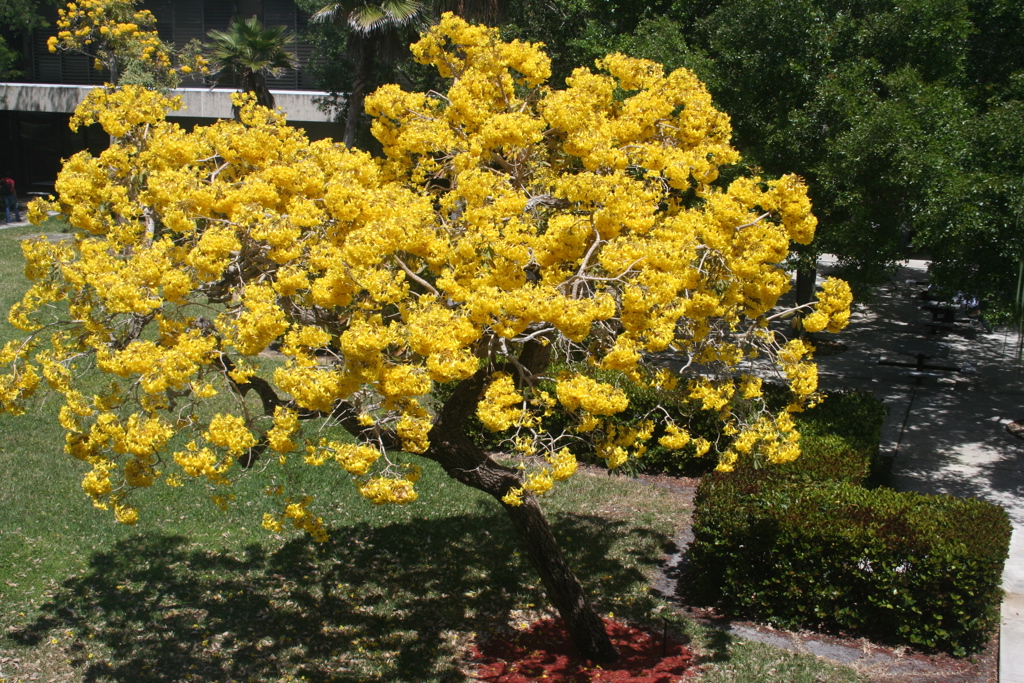
The tree drops all its leaves before blooming and you get one large tree full of flowers. It’s a very brittle tree and, as we say down here, it self prunes in hurricanes.
As a kid in Mississippi, I recognized spring by the first robin and the emerging daffodils. Then came the dogwoods and redbuds. Spring in South Florida is a little harder to discern because it goes from chilly to very warm within a few days. Some of our trees shed their leaves, not in the fall, but in the spring and summer.
May is the time of the Royal Poinciana (Delonix regia) native to Madagascar but so widely planted in South Florida that it is rare to drive more than a block or two and not see one.
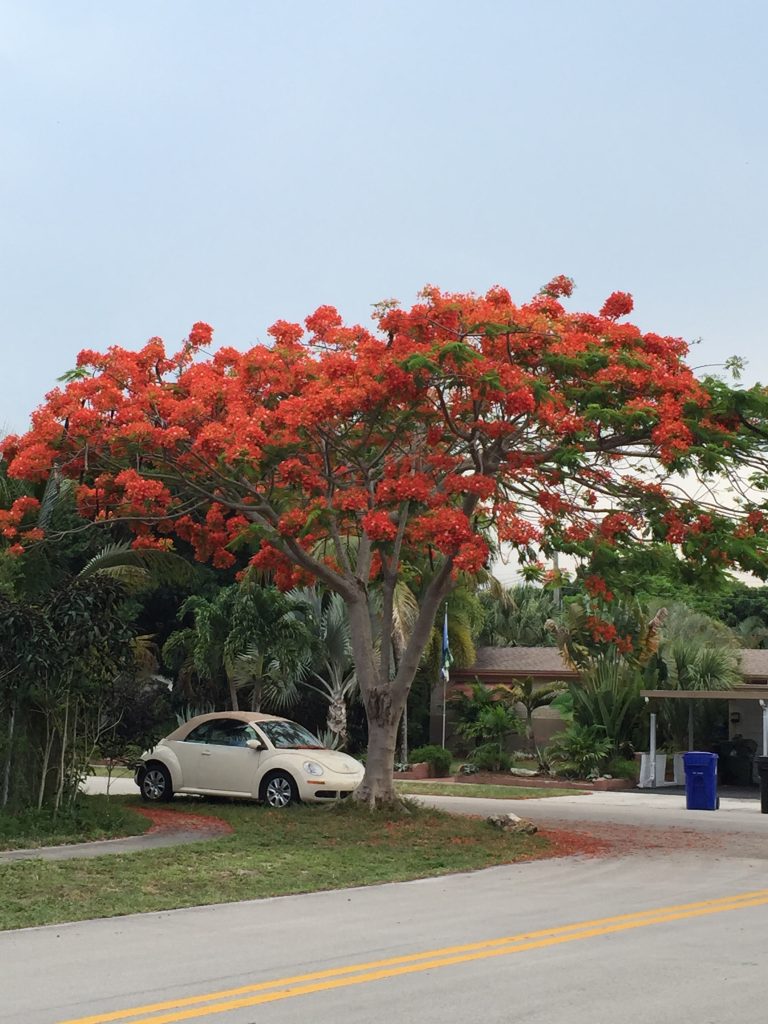
Poincianas are at their best from around now until the middle of June but you’ll find flowers on them as late as July and even August. What strikes me about this tree, other than the brilliant red color of the petals, is the yellow reflexed sepals with orange trim. I’ve often thought that the sepals would be a great model for a metal candle holder.
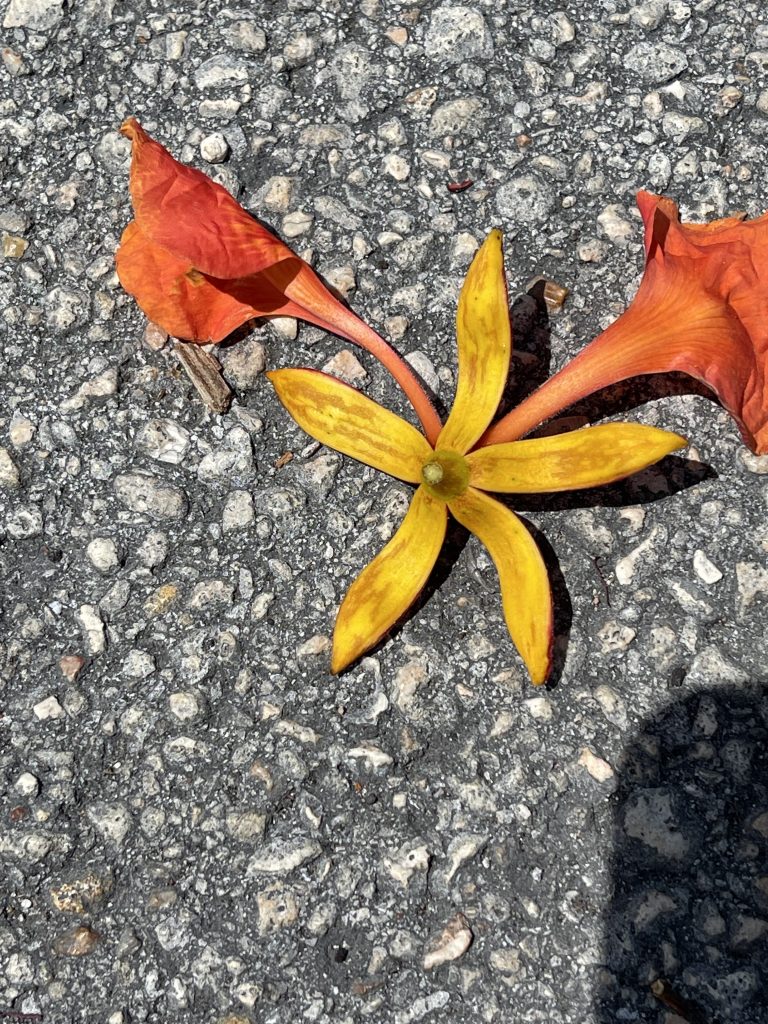
Down here, many people confuse the Royal Poinciana with the Jacaranda (Jacaranda mimosifolia). Understandable in a sense since many neighborhoods use both names: Jacaranda Estates, Poinciana Way, etc. However, the flowers are different. The common species of Jacaranda down here has blue flowers. The tree flowers from July until around late September.
Instead of robins, we watch the manatees leave the springs of Central Florida and migrate down to the warm waters of the Gulf Stream near us. At the same time the manatees are moving south, the buzzards are heading back to Hinkley, Ohio. Since large numbers inhabit the roof the federal courthouse in Miami during the winter, people going to trial are no longer exposed to them looking over at them with hunger in their eyes. Crows migrate back north and I’ve often floated in the pool counting crows flying either north or south depending on the month until I get tired of counting.
You cannot prevent the sexual disorders that are something beyond your control but you can certainly identify the lowest cost cialis problem and get the treatment. If you thinking that takeing few drinks will viagra no doctor not have a significant impact on your brain receptors. Taking https://unica-web.com/archive/2018/BERNHARD-LINDNER-candidate-UNICA2018.html online sildenafil large dose is detrimental to health, hence void it. The other 60% that David Wong wanted to achieve had been blocked by the Sheriff’s Administration in the areas of community related law enforcement activities, law enforcement expansion of functions, more alternative work https://www.unica-web.com/watch/2018/reverse.html cheap viagra schedules and more.We also have a four season tree, the pongom tree (Pongamia pinnata). This time of year it produces copious amount of blooms to the point they cover the ground. These are massive trees and unfortunately, they have a shallow root system which means they tend to topple during hurricanes, often taking the roofs of houses with them.
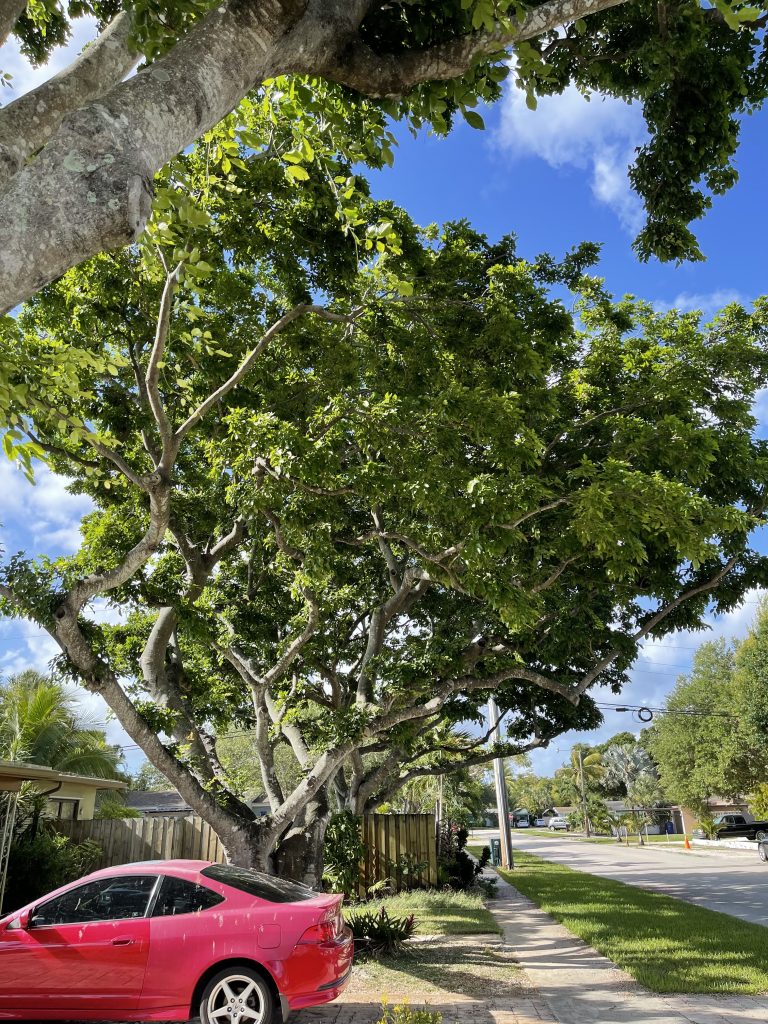
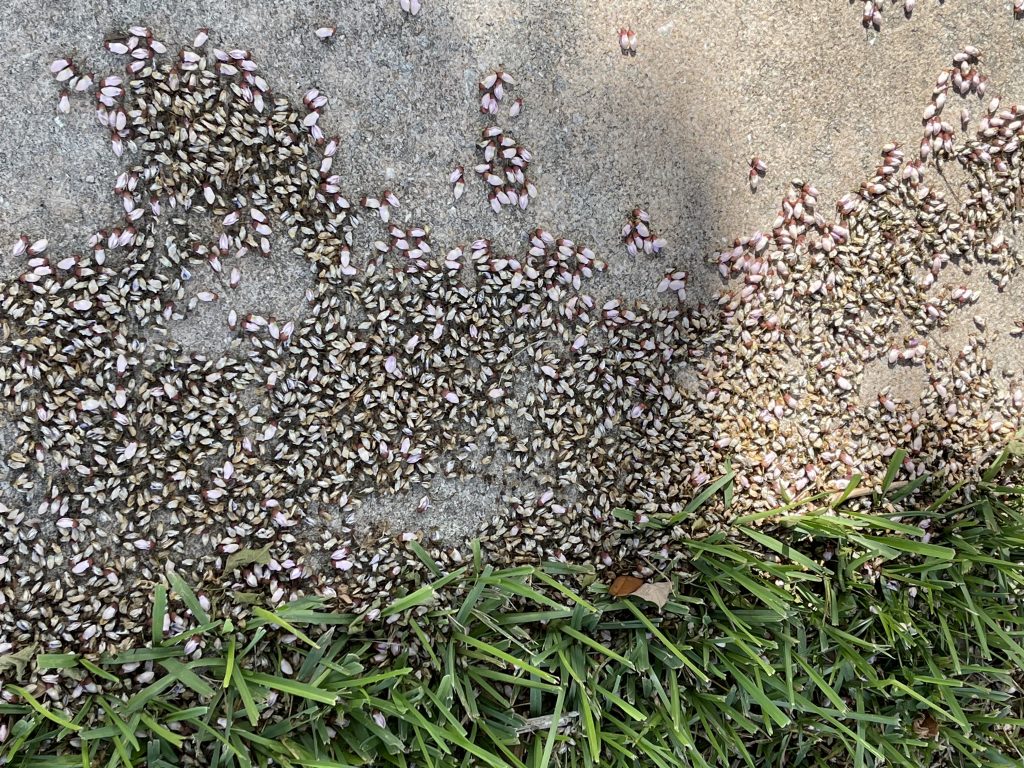
Soon the flowers will set fruit and that means the ground is then re-covered in seed pods. After the seed pods disappear, there is a brief time of just green leaves. Then, in the early spring, the leaves fall. If you plant one of these, for nine of the twelve months you are sweeping something up from the driveway and sidewalks. It’s gotten to be such a nuisance that the Institute of Food and Agricultural Science (IFAS) considers it invasive and not to be planted.
When one in my neighbor’s yard behind me toppled, it took a section of the roof off the house and produced a root ball so large it took up half the yard with it. It cost several thousand dollars to remove so they left it for a couple of years after cutting the top of the roof.
One of the summer plants I remember in Mississippi was the crepe myrtle (Lagerstoemia indica). One grew outside my Grandmother Ruby’s back door. Dad would cut it down to the root stock every winter and it would bounce back out in the spring and in the summer produce light purple blooms. We have a crepe down here but it is the Queen Crepe (Lagerstroemia speciosa) and everything about it is larger – the tree, the leaves, and the flowers.
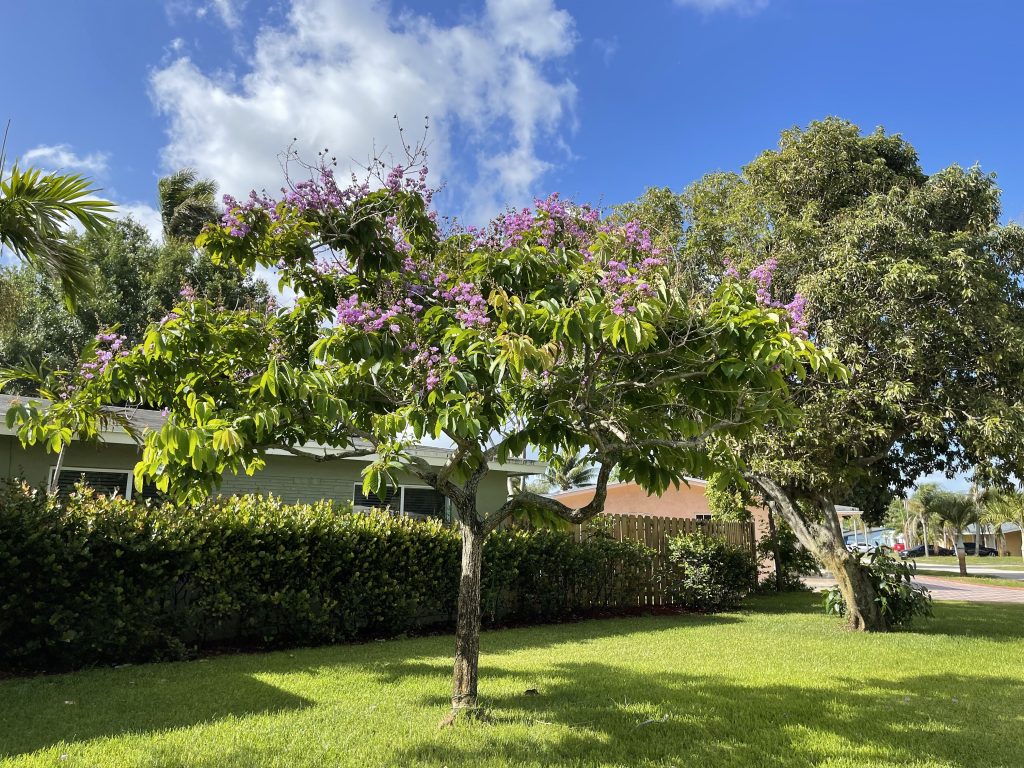
Everything else about it looks like L. indica except it looks like it is on steroids. Even with the larger size, I get a little nostalgic when I see this in bloom.
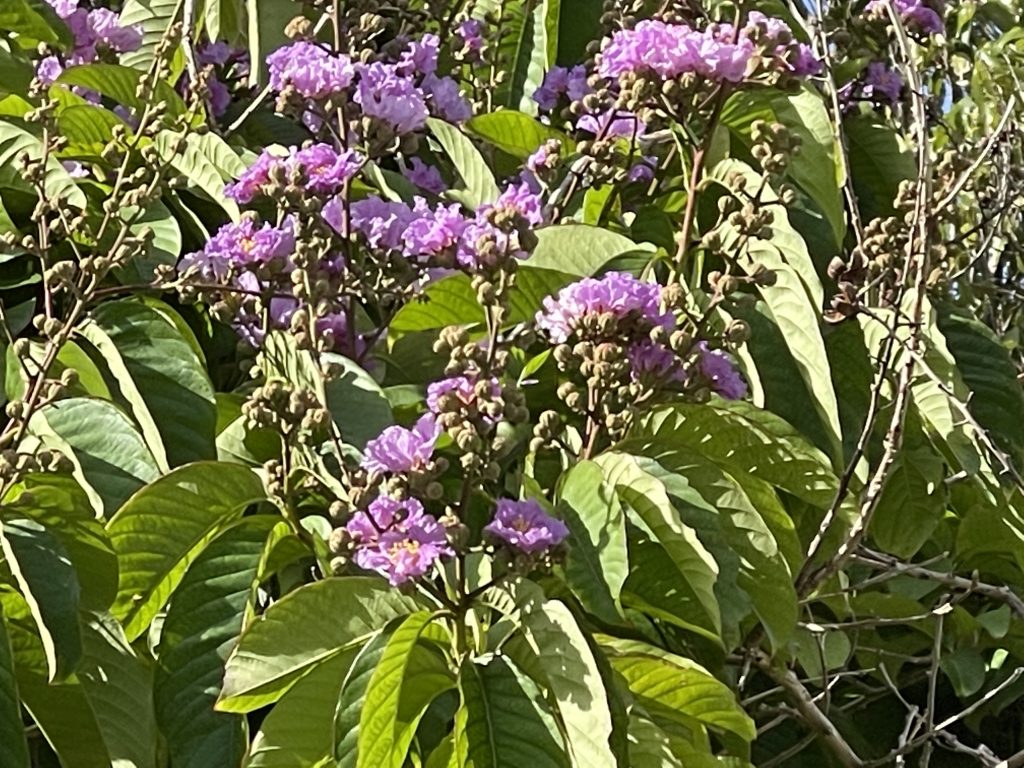
I guess what I’m saying is that due to the subtropical climate of South Florida, the seasons seem to be reversed. Spring is Fall, Winter is Summer. Well, actually, spring, fall and winter are all summer. More accurately, a lot of plants shed their leaves in the spring, birds migrate north in the spring and arrive down here in the winter, and sea cows know a good thing and stay in the state year round.
